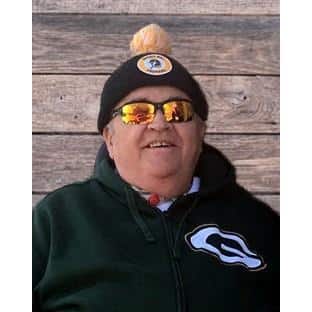Friendship Alley in downtown Columbus is about to receive an extension and a facelift.
Students in the Ivy Tech Community College Columbus School of Art and Design, and high school students selected for a special summer camp at Ivy Tech, are researching the project now, and soon will begin designing a new look for the alley that will feature bright murals with a nod to Columbus’ famous architecture.
Friendship Alley, or Friendship Way as it is also known, is a paver-lined walkway in the 400 block of Washington Street leading to the parking garage at Jackson and Fourth streets. Dedicated in August 1998, materials for the alley were a gift of friendship from the citizens of Miyoshi, Japan, Columbus’ sister city. Public art, removable murals and other displays have been a part of the area through the years.
For the Friendship Way Bicentennial Mural Project, the students, working with R. Lloyd Brooks, program chair for visual communications, and other Ivy Tech facility, will redesign the look of the area leading into the Jackson Street Garage, now a somewhat dark concrete corridor devoid of ornamentation.
[sc:text-divider text-divider-title=”Story continues below gallery” ]
In addition to redesigning that space, the students will work on an urban walls project, creating murals for the sides of the buildings that line the Friendship corridor, and filling boarded-up, rounded window spaces above the alley with public art.
The students are part of a course called Community Design Workshop, described as a study of public art in conversation with architecture.
Brooks detailed the plans to the Columbus Board of Works last week and the city’s redevelopment commission on Monday. Students have toured the areas that will be redesigned and are spending time researching the history of architecture for the city before embarking on possible designs, Brooks said.
Showing photos of the Jackson Street garage alleyway space as it appears now, Brooks told city officials that many people find the area dark and unappealing.
“It doesn’t match the legacy of design in Columbus,” he said.
An artist’s rendition of how the space could look shows the familiar Friendship Alley pavers extending the walkway into the space, with a bright mural covering one wall.
Students will produce 20 to 30 design concepts for that wall to present July 20 in City Hall to city officials, Brooks said. Then, members of the general public will be asked to vote on their favorite design.
That vote, along with ideas from an appointed selection committee, will lead to the decision of which design will be on the wall, he said.
To brighten the entire space, Brooks said some creative thinking was necessary to come up with lighting ideas — as the ceiling of the space is a load-bearing solid concrete base. However, on the opposite side to the proposed mural is a metal chain link fence that could be part of a lighting design, he said.
Brooks is proposing adding LED lights behind the metal chain link to light up the space with a unique look created by the metal grating on the exterior.
He also proposes removing old bicycle racks that line the walkway area and replacing them with the updated Dancing C’s that are on the bike racks throughout the city, which also will play off the colors in the mural.
Board of Works members were enthused about the project, saying adding the light and color to the area dramatically improved its appearance.
For the public artwork along the sides of buildings, Brooks said students will use their photography skills to create mural-like images that can be printed on vinyl and fill the boarded-up window spaces with photographic art.
And several artwork grid areas that were used for public art projects with Columbus middle schools would have large photographic murals on display.
Brooks said he wants the Columbus community to think of the area as an education corridor and hopes to tie in the educational component with future Landmark Columbus projects.
Timeline for the project calls for the selection committee to settle on design by the end of July, with installation continuing through August. An unveiling and dedication ceremony would be planned in September, in conjunction with the Bicentennial torch run through Columbus on Sept. 18.
The project has been designated a Bicentennial Legacy Project by the state, Brooks said.
Estimated cost for the project is about $10,000, and downtown businessmen Rick Johnson and Tom Dell have already stepped forward as corporate sponsors, Brooks said.
[sc:pullout-title pullout-title=”About the project” ][sc:pullout-text-begin]
Ivy Tech Community College Columbus students and high school students enrolled in a summer camp are working on a visual design project this summer to expand and add public art to Friendship Alley in downtown Columbus.
Designs for the public art will be presented at Columbus City Hall at 8:30 a.m. July 20 and the public will have an opportunity to vote on their favorites before a selection committee announces the winning design.
Installation will happen during August and the final upgrades will be unveiled on Sept. 18 during the Bicentennial Torch ceremony in downtown Columbus.
[sc:pullout-text-end][sc:pullout-title pullout-title=”About Friendship Alley” ][sc:pullout-text-begin]
Friendship Alley, also known as Friendship Way, is in the 400 block of Washington Street between Fourth and Fifth streets in downtown Columbus.
It is an extension of the Streetscape project that began more than a decade ago to improve the appearance of downtown Columbus.
The alley has brick pavers and is decorated with a neon sculpture, a gift from the people of Miyoshi, Japan, a Columbus sister city. The pavers that make up the pathway in the alley were a gift to the city from Miyoshi and bear the names of many Japanese families and companies.
Cork Marcheschi, San Francisco, created the neon sculpture and William A. Johnson, Seattle, Washington, was the project designer.
[sc:pullout-text-end]






